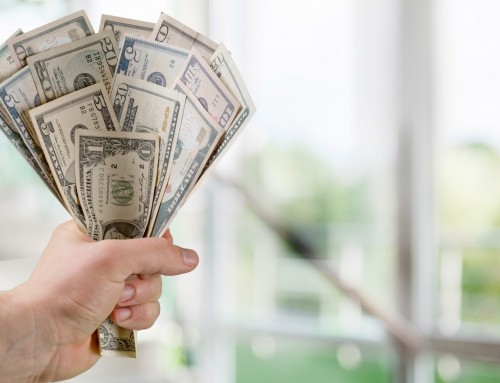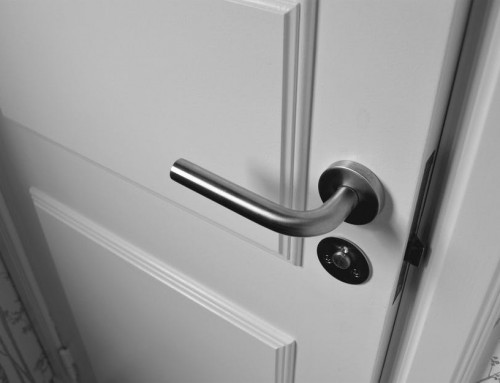Want to get paid for shopping? You’re not the only one.
A survey by Total Systems Services shows credit card rewards are more important to consumers than low-interest rates.
People also prefer cash rewards over points, merchandise or airline miles. They like cash because it won’t expire like points, and it’s easy to redeem.
Most banks offer cash card options, but you need to make an informed decision. Let’s take a look at what’s involved.
Types of Cash Card Options
There are three types of cash cards. Each one gives rewards in a different way. If you want to get cash-back rewards, here are your choices.
1. Flat-rate Cash-back Cards
Flat-rate cash-back card gives the same reward amount on everything you buy. You earn 1 to 5 percent on every eligible purchase. A flat-rate card doesn’t limit the amount you can accumulate.
Some flat-rate cash cards give you cash back when you buy, and again when you pay off your balance.
The flat-rate method is simple and straight-forward. Look for a card with a rate of 1.5 percent or rate. Avoid cards with an annual fee. Find a card that offers a sign-up bonus.
2. Tiered Cash-back Cards
A tiered card pays more in specific categories. For example, you receive a higher percentage for gas, but a lower rate on everything else. Sometimes, the higher rate ends after you spend a certain amount. Or, it may limit you to a specific timeframe.
A cash card with a tiered model works well if you spend often in certain categories. It’s possible you can earn more than with a flat-rate card.
Another option is to use two cards — a tiered and flat-rate card. You use the tiered card for specific purchases and the flat rate for everything else.
When choosing a tiered cash-back card, look for categories that match your spending. Find a card that rewards you 3 percent back or more. Get a higher rate if there’s an annual fee. Look for a sign-up bonus to jump-start your savings.
3. Bonus Category Rewards
Bonus category rewards offer a high rate on certain items and a low flat rate on everything else.
The bonus categories usually change every three months. You may get 5% cash back on groceries this quarter, then it will revert to the standard rate next quarter. Examples of bonus category rewards are transportation, travel, groceries, and restaurants.
You may have to activate the bonus each time by opting in. It takes extra attention, but you’ll earn more money. There is usually a cap on the amount you can earn at the higher rate.
Consumers need good credit scores to qualify for big rebate deals and low-interest rates.
If you get a bonus category cash-back credit card, make sure it matches your spending habits. Choose one with no annual fee and a sign-up bonus.
Choose the Right Card
A study by J.D. Power revealed that 1 in 5 credit cardholders have cards that don’t match their spending habits.
It’s important to pick your card based on how you spend money. Be realistic about the effort needed to meet the rewards requirements.
If you want to keep it simple, stick to a flat-rate card. If you want to put more thought into your cards, try a tiered or bonus category card.
If you’re ready to work for your rewards, use several different types of cards. Pay attention to details, and use each card in the right situation.
Cash Back Credit Card Survey
Last June, CreditCards.com surveyed 52 cash back credit card offers from 40 of the largest banks. Their findings revealed most cards offered a 1 percent base rate. Rates of 2 percent were rare.
Out of the 52 cards, 22 offered an additional tiered reward of 2 to 6 percent on certain purchases. Three of the cards had rotating bonus categories.
Most of the cards (32 out of 52) had a sign-up bonus. 43 cards allowed consumers to redeem their rewards as a credit on their balance.
Pros and Cons of Cash Cards
Depending on the card, you get cash, merchandise, travel or a credit on your account when you make a purchase.
Cash back rewards are the easiest to use. You don’t have to convert points into merchandise or miles. It’s easy to redeem the reward and cash out or apply it to your balance.
Extra Rewards
Bonus categories give consumers extra ways to save money on certain purchases. If categories rotate throughout the year, there are several ways to earn more. As the survey above showed, most cards offer a sign-up bonus.
Perks
Many cash cards have benefits like warranties, rental car insurance, and buyer protection.
Credit Score
All the rewards sound great, but the bottom line is you have to have good, or very good credit to get the best deals.
The CreditCards.com survey showed 75 percent of the cash back cards required an above-average credit score (740-850). If you have poor credit but need money for a major purchase, consider a loan from Sunwise Capital.
Minimum Requirements
Read the fine print to see if you need to spend a certain amount to get the sign-up bonus. Spending requirements can range from a few hundred to a several thousand dollars. You don’t want to go on a spending spree to get rewards.
Less Valuable Rewards
Cash-back cards usually lock in at a certain percentage. Your reward value won’t go down, but it won’t increase either. If you want deals on travel, you’ll find bigger rewards on co-branded cards hotel and airline cards.
Fees and Interest Rates
If you aren’t careful you could spend more on fees than you earn in rewards. Pay attention to balance transfer, late, and over-limit fees.
The average interest rate for a balance on a cash back card is 18 percent APR. That’s 3 percent higher than the national credit card average.
If you carry a balance on your card, you may do better with a non-reward card with a lower interest rate.
Get the Best Card for You
Always take a careful look at your spending habits before you decide. Use the information in this article to make the right choice for your financial situation.
Visit Estilo-Tendencies to learn more about business, beauty, and style.











